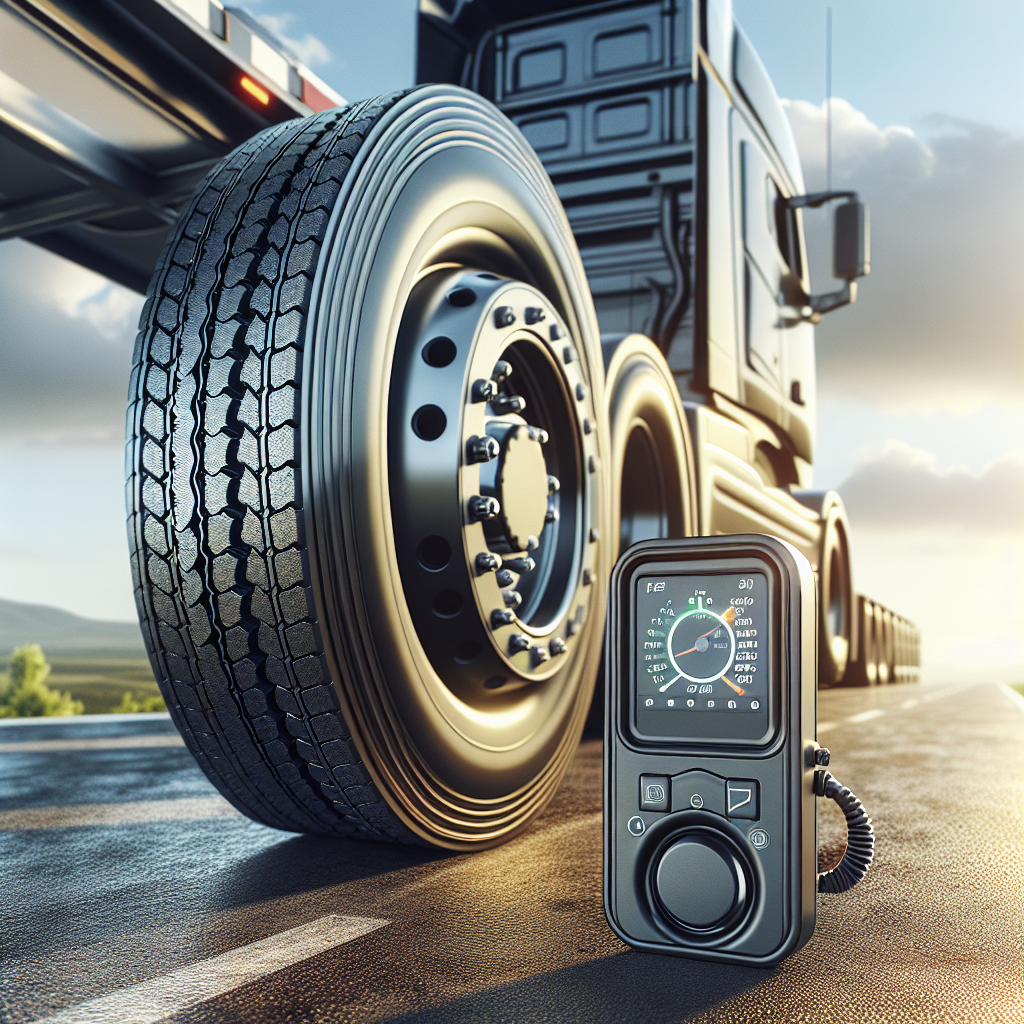As technology advances, the transportation industry is witnessing significant enhancements aimed at improving safety and performance. One such innovation is the Tire Pressure Monitoring System (TPMS). This system is designed to monitor the air pressure inside the tires of your trailer, providing real-time data to the driver or fleet manager.
Understanding TPMS is crucial, as tire pressure plays a significant role in ensuring the safety and efficiency of your trailer. Properly inflated tires enhance fuel efficiency, reduce tire wear, and most importantly, prevent blowouts that can lead to catastrophic failures. According to the National Highway Traffic Safety Administration, under-inflated tires contribute to a significant number of road accidents, making the implementation of TPMS not just a recommendation, but a vital necessity.
When you install TPMS, you gain access to essential metrics that can help you manage your trailer's performance proactively. This system not only alerts you to low tire pressure but also provides valuable data on axle temperatures, which can be indicative of potential issues before they escalate.
With this in mind, it's clear that integrating a TPMS system into your trailer is a step towards ensuring safer journeys. Tow with peace of mind, knowing that trailerwatchdog is standing guard. For more information on how to enhance your trailer's safety, visit trailerwatchdog.com.
Essential Tools Needed for TPMS Installation

Installing a Tire Pressure Monitoring System (TPMS) requires some specific tools to ensure a smooth and efficient process. Having the right equipment can significantly reduce installation time and enhance the reliability of the system. Here’s a list of essential tools you’ll need:
- Socket Set: A comprehensive socket set is crucial for removing and securing wheels during installation.
- Tire Pressure Gauge: This tool will help you check the tire pressure manually before and after installing the TPMS sensors.
- Torque Wrench: Ensuring that bolts are tightened to the manufacturer’s specifications is vital to avoid any mishaps on the road.
- Air Compressor: An air compressor is necessary for inflating tires to the correct pressure during the installation process.
- TPMS Tool/Programmer: This specialized device is used to program the TPMS sensors to communicate with the vehicle's onboard computer.
- Safety Gear: Always wear safety glasses and gloves to protect yourself while working on your trailer.
By ensuring you have these tools on hand, you can streamline the TPMS installation process and set yourself up for success. Proper installation not only enhances the functionality of your trailer but also contributes to safer travels.
Step-by-Step Guide to Installing TPMS
Installing a Tire Pressure Monitoring System (TPMS) can seem like a daunting task, but by following a clear step-by-step guide, you can ensure a successful installation. Here’s how to install TPMS effectively:
- Prepare the Trailer: Start by parking your trailer on a flat surface. Engage the parking brake and ensure the tires are cool to avoid inaccurate pressure readings.
- Remove the Wheels: Use your socket set to loosen and remove the lug nuts from the wheels. Carefully take off each wheel and set it aside.
- Install TPMS Sensors: Attach the TPMS sensors to each wheel's valve stem. Ensure they are securely fastened to prevent any leaks. Some sensors may require a specific orientation, so refer to the manufacturer's guidelines.
- Reattach the Wheels: Place the wheels back onto the trailer and hand-tighten the lug nuts. Use a torque wrench to tighten them to the recommended specifications.
- Program the TPMS: Utilize the TPMS tool/programmer to sync the sensors with the vehicle's onboard computer. Follow the tool’s instructions to ensure proper communication.
- Check Tire Pressure: Before finalizing the installation, use a tire pressure gauge to verify that each tire is inflated to the correct pressure.
- Test the System: Finally, test the TPMS to ensure it is functioning correctly. Monitor the system for any warning lights on the dashboard.
By following these steps, you can ensure that your TPMS is installed correctly and ready to provide real-time tire data for enhanced safety and performance.
Troubleshooting Common TPMS Installation Issues

Even with careful planning, you may encounter some issues during or after the installation of your Tire Pressure Monitoring System (TPMS). Here’s a guide to troubleshooting common TPMS installation issues:
- Sensor Not Responding: If the TPMS sensors are not communicating with the vehicle, check the battery in the sensors. Replace it if necessary. Additionally, ensure that the sensors are installed correctly and securely on the valve stems.
- Warning Light Remains On: A persistent warning light may indicate that the system has not been calibrated properly. Use the TPMS programming tool to re-sync the sensors with your vehicle's computer.
- Inaccurate Pressure Readings: If the pressure readings are inconsistent or inaccurate, verify that the sensors are not installed too tightly, which can affect performance. Also, check for any leaks in the valve stems or around the sensors.
- Sensor Compatibility Issues: Ensure that the TPMS sensors are compatible with your trailer and vehicle make. Using incompatible sensors can lead to malfunction or failure to read data.
- Battery Life Concerns: TPMS sensors typically have a limited battery life. If you experience multiple sensor failures, consider checking the age of the sensors and replacing them as needed.
By identifying and addressing these common issues, you can maintain the effectiveness of your TPMS, ensuring that it continues to provide vital tire data for safe towing.
Maintaining Your TPMS for Best Performance

To ensure your Tire Pressure Monitoring System (TPMS) operates effectively over time, regular maintenance is essential. Here are key practices to keep your TPMS functioning at its best:
- Regular Sensor Checks: Periodically inspect the sensors for any signs of wear or damage. Look for cracks or corrosion that may affect their performance. Replace any faulty sensors immediately to avoid inaccurate readings.
- Battery Maintenance: Many TPMS sensors are equipped with batteries that have a limited lifespan. Check the manufacturer’s guidelines for battery life and replace them as needed to prevent sensor failure.
- Tire Pressure Monitoring: Always monitor tire pressure regularly, not just when the TPMS warning light activates. Keeping tire pressure at the recommended levels helps prolong the life of your tires and increases fuel efficiency.
- System Calibration: After any maintenance such as tire rotation or replacement, be sure to recalibrate your TPMS. This ensures that the system accurately reads the tire pressures and maintains optimal performance.
- Software Updates: Check for any available software updates for your TPMS system. Manufacturers often release updates to improve functionality and address any known issues.
By following these maintenance tips, you can enhance the reliability and accuracy of your TPMS, providing you with crucial data to ensure safe towing.
Conclusion and Final Tips for TPMS Installation

Successfully installing TPMS is a critical step towards enhancing the safety and efficiency of your trailer. By following the guidelines outlined in this guide, you're not only ensuring that your tires are monitored effectively but also taking proactive measures to prevent potential roadside emergencies.
As you wrap up your TPMS installation, here are some final tips to keep in mind:
- Double-check Connections: Ensure all connections are secure and that the sensors are properly calibrated to avoid any malfunction.
- Familiarize Yourself with the System: Take time to understand the features and capabilities of your TPMS, including how to interpret alerts and warnings.
- Routine Testing: Regularly test your TPMS system every few months to confirm it’s functioning correctly.
- Stay Informed: Keep abreast of any updates from the manufacturer regarding your TPMS, as new information can enhance your system's performance.
With a well-installed and maintained TPMS, you'll enjoy peace of mind during your travels. Tow with peace of mind, knowing that trailerwatchdog is standing guard.

